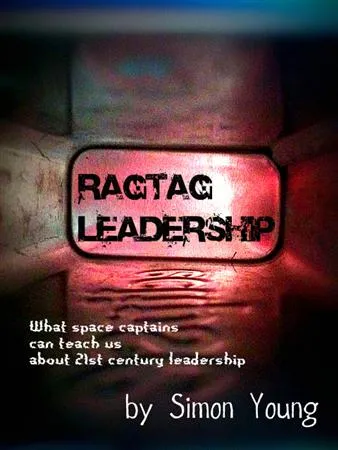Ragtag Leadership
Written by

For some, leadership is something we seek. For others, it's a necessity to achieve the vision we have. Either way, we need to know about leadership in the 21st century.
Simon Young calls it Ragtag Leadership.
* * *
I've always struggled with business books. They're full of fascinating ideas and facts, but they're often presented in uninspiring ways.
Science fiction, on the other hand, almost always has something to say about how humans interact with each other.
It's easy to think thoughts like that and then dismiss them, but I kept going with this line of thought. In fact, I'm writing a book about it.
I love Star Trek. It's a cultural institution, and has earned the devotion - and emulation - of fans around the world. And yet, I believe it represents a management model that is becoming obsolete in our current environment.
Star Trek is about the uniform. The uniform represents years of training, and a common mission: to seek out new life, new civilisations, to boldly go where no one has gone before.
The trouble is, it's very hard to find an organisation like that today. Two years in a role is considered a good innings. And in the arts, the term "role" is very loose.
Enter Firefly, a "space western" made in 2003 by Buffy the Vampire Slayer creator Joss Whedon. Most people haven't heard of Firefly, but those who have absolutely love it.
Unlike Star Trek, everyone is on Firefly for a different reason. For some, it's to get from A to B. For others, it's a place to hide out from the authorities. For others still, it's part of their business.
And at the head of it all is Captain Malcolm Reynolds, someone who, it seems, always has options. He doesn't seem particularly noble or good, just smart. And yet, over the course of the series, he inspires great loyalty from his shipmates. He is most definitely the captain, but not always in a Star Trek sense. The others look up to him, and they also expect a lot of him.
The more I rewatch Firefly, the more I see it's not the personal style of the captain I'm writing about (he can tend to be a bit "my way or the airlock"), but rather the situation. There's no uniform, so any leader needs to consider the different needs and motivations of each crewmember.
Of course, I'm not alone in writing about this topic. If you're interested in getting ragtag in your leadership style (that is, tapping into your people's diverse and intrinsic motivation), check out these reads:
Drive by Daniel Pink is a fascinating ride into what makes us tick at work. Quick takeaway: money as motivation makes creative work worse. Here's a great video summary of the book.
Linchpin by Seth Godin is another mind-blower. You're an artist, says Godin, so think like an artist. Be indispensible. Do what consumes you. And never underestimate the value and importance of emotional labour.
For some, it may be incredibly obvious, but for others - especially sensible, business-minded types - it can be a lightning bolt of revelation.
On a larger organisational scale, there's Open Leadership by Charlene Li. Li cowrote the book Groundswell which put social media into a business context back in 2008. Now she looks at the bigger implications of losing control over the message. Now is not the time to go limp and surrender, says Li, but to learn a new style of leadership - one that's about intrinsic motivation and emotional labour.
And of course, you can watch the ongoing development of Ragtag Leadership at www.ragtagleadership.com.